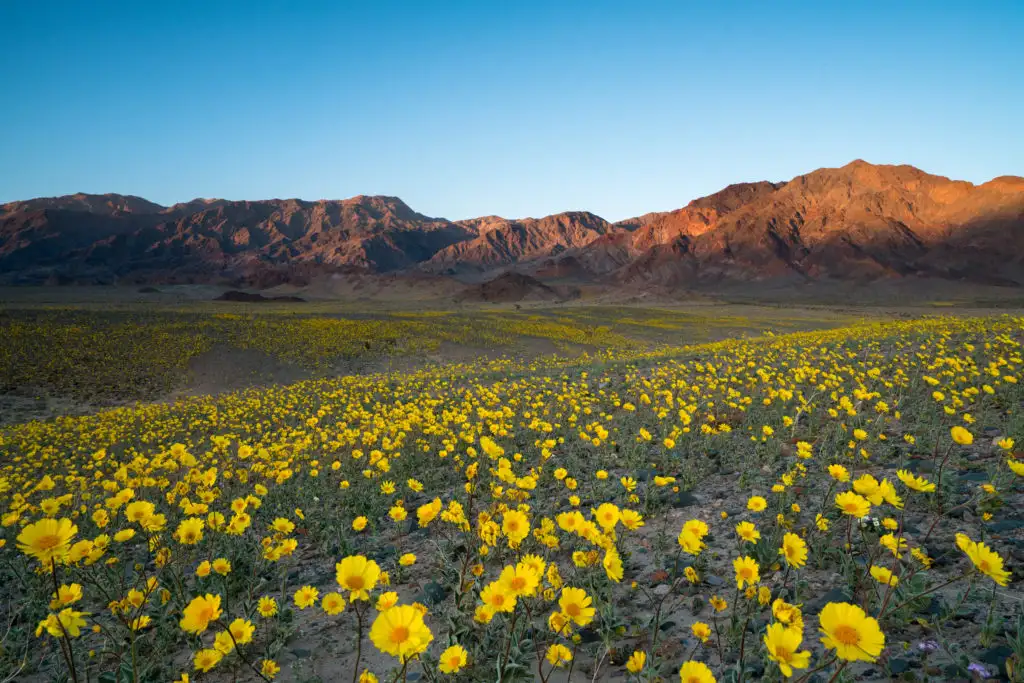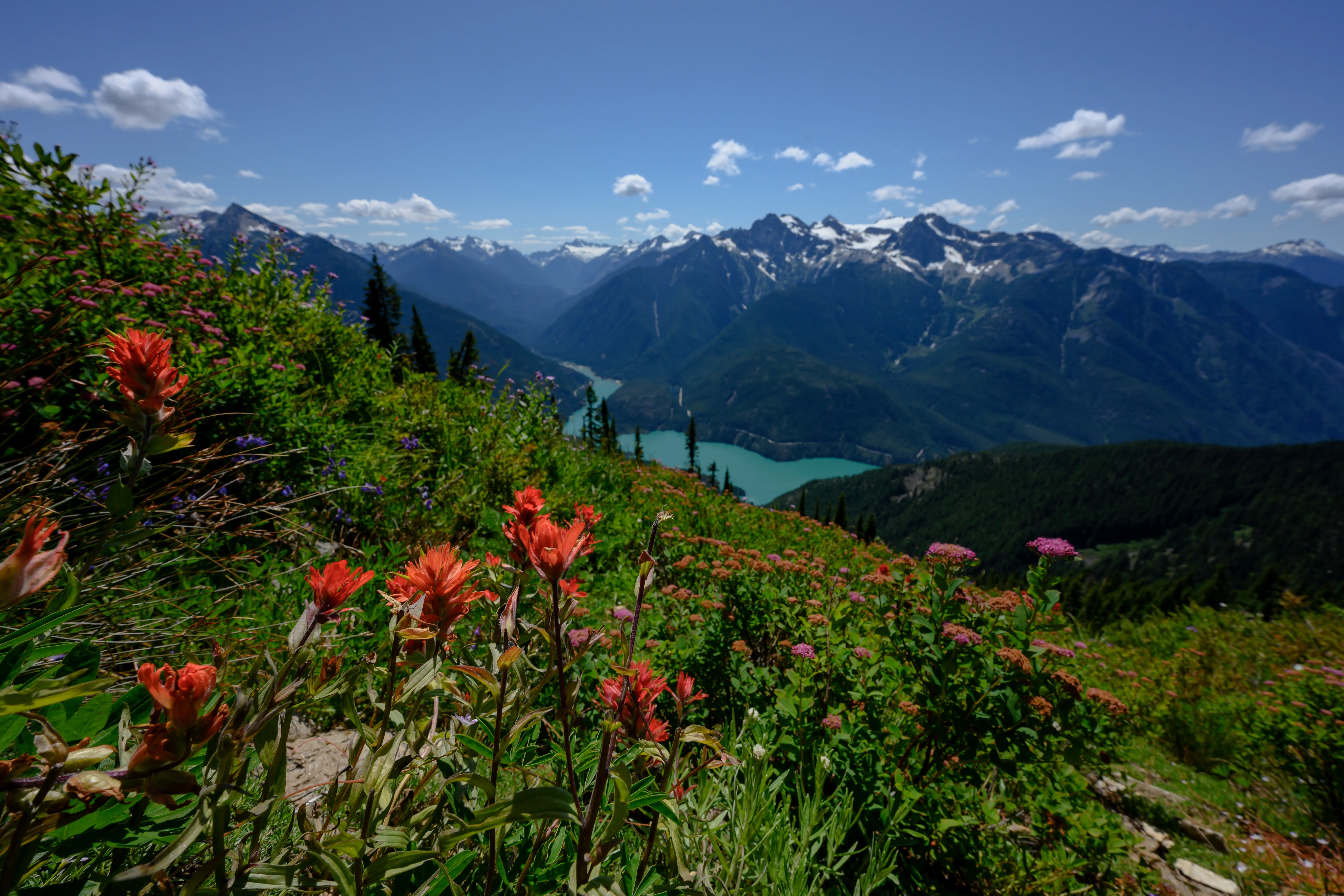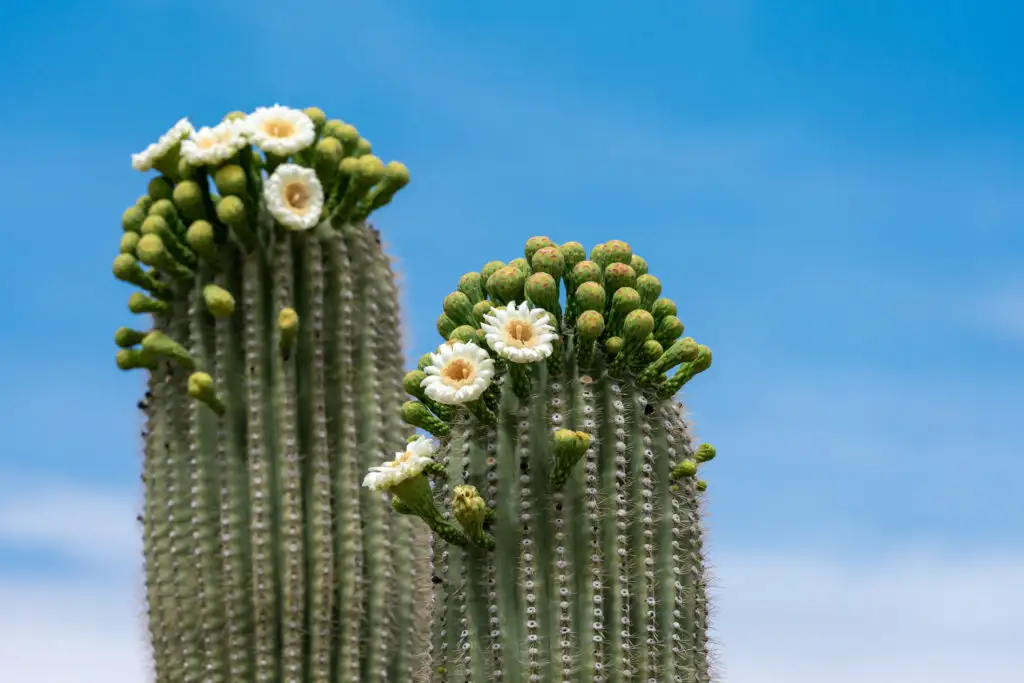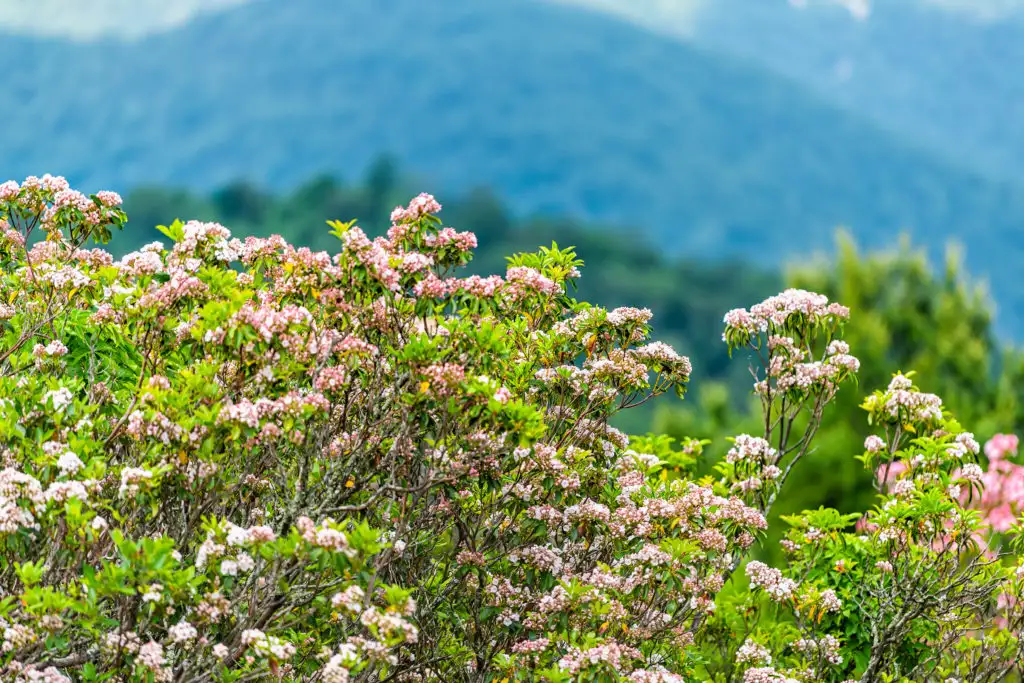As the weather slowly warms up and the snow melts, the landscape begins to change in many National Parks. Wildflowers begin to bloom covering mountains, hillsides, valleys, prairies and meadows. In many parks, spring initiates the flower season but often you can see a colorful nature show through the summer and even in fall, as different plants need different temperatures and rainfall to say hello to the world.
So if you’re longing for a change of pace and a literal change of scenery, consider spring a fabulous season to hop in the car, take a scenic drive and even a hike to get outside.
Death Valley, California

Sand dunes and intense temperatures may be what you think of when you imagine this national park. But when you visit in the springtime, wildflowers are popping open and you’ll be in awe of all the beautiful blossoms contrasting the desert backdrop. And if you go during what’s called a “super bloom” year (which tends to happen once per decade, based on a variety of factors, including rainfall, temperatures and soil conditions) this desert landscape converts into a blanket of vibrant flowers.
Typically, from mid February to mid April you can see an array of flowers in the foothills and higher elevations and canyons. In April and early May, you’re likely to see a variety of species, such as the desert paintbrush, mojave aster and desert dandelion.
North Cascades, Washington

Located in the state of Washington about three hours away from Seattle, North Cascades National Park offers an array of outdoor activities year-round. From waterfalls to lakes and streams, forests and meadows and jagged mountain peaks—when spring is sprung you’re in for a delightful treat. Because habitats are distinct throughout the park, there are different types of plants growing that prefer different environments, such as more moist on the west side or drier on the east side.
In forests at lower elevations, you can typically see blossoms as early as late February to March. In late summer, wildflowers begin to bloom in the alpine region. You can typically see Indian plum, burgundy and pink heather, purple and blue lupines and even currants with their red flowers that hummingbirds love to frequent in April and May.
Rocky Mountain National Park, Colorado

Rocky Mountain National Park covers 415 square miles and is a wonderland with wildflowers because of its unique landscapes from mountains to coniferous forests, cascading waterfalls and many lakes.The park has numerous ecosystems that all are intertwined and connected and create habitats to several hundreds flower species. Many plants begin flowering in May and continue on through the Fall, with different blossoms taking the stage.
In summer months, you can see a variety of species from the aster, cacti, mustard, orchid and the pea family. You can spot golden banner with numerous bright yellow flowers on one stem or the blanket flower with slender mustard colored petals and a red hue inside, as well bluebells, wild geraniums and abundance more.
Saguaro National Park, Arizona

This park may get little attention, especially since Arizona is known for a more famous park (the Grand Canyon) but this Sonoran desert scenery shines. The cacti saguaro represents the American west and only grows in a few places in the United States making this park extra special because it’s one of the few places to witness these spectacular cacti and in a protected area, too.
Although wildflowers can often be seen throughout the year, spring and summer can be magical times for beautiful displays of blooming flowers. You can often spot bright mustard colored desert marigolds, gold poppies and blue desert lupines as well as the white flowers of the saguaro cactus.
Saguaro also has super blooms but typically only occur every decade or so since there needs to be the perfect combination of the elements to create a spectacular show of blossoms that appears to be painting the desert in various hues.
Shenandoah National Park, Virginia

Shenandoah National Park based in Virginia may have one of the most diverse flora with over 860 different flower species. This park may just be one of the best places to see flowers in bloom from spring to fall.
Warmer weather and rainfall create a wonderful display usually beginning in late March with delicate bluish purple flowers known as hepatica and white hued and yellow bloodroot, along with fuschia and purple violets and wild geraniums found in forested areas.
By the time summer rolls around, you can see white, light pink and fuschia colored milkweed, which are loved by butterflies, and impatiens along with wild azaleas, yarrow and mountain laurel, among many others.
You Might Also Like:
• The Best and Worst Rental Car Companies in North America• 10 Quintessential Fall Weekend Trips
• The 8 Scariest Haunted Hotels in the World
• Your Questions About Online Passport Renewal, Answered
• How To Skip To The Front Of The Airport Security Line…Every Time
We hand-pick everything we recommend and select items through testing and reviews. Some products are sent to us free of charge with no incentive to offer a favorable review. We offer our unbiased opinions and do not accept compensation to review products. All items are in stock and prices are accurate at the time of publication. If you buy something through our links, we may earn a commission.
Related
Top Fares From
Today's Top Travel Deals
Brought to you by ShermansTravel
12-Night Peru Escorted Tour, Incl. Sacred...
Wingbuddy
 vacation
$2198+
vacation
$2198+
Amsterdam to Copenhagen: Luxe, 18-Night Northern...
Regent Seven Seas Cruises
 cruise
$12399+
cruise
$12399+
Ohio: Daily Car Rentals from Cincinnati
85OFF.com
 Car Rental
$19+
Car Rental
$19+




